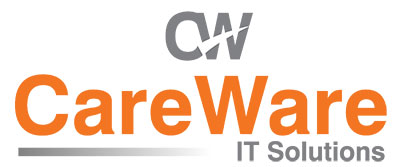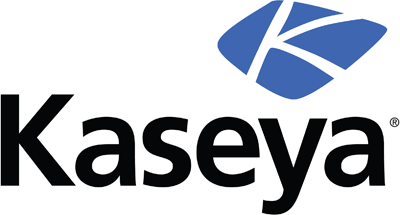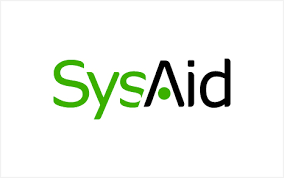A Comprehensive IT Help Desk Comparison
In this week’s blog, I am going to be discussing the advantages and disadvantages of the most popular help desk systems that are available at this time and will outline what I believe are the best ones for multiple given scenarios.
The information within this document was provided by the support team from the following companies and is subject to change. The prices can vary depending on the conditions of your work environment. Use this only as a guideline and cross reference the information with the website’s product description to confirm accuracy. If any of the information is found to be incorrect then I will make changes as appropriate.
Spiceworks is a free ad-supported, in-house, community driven help desk program targeted towards small to mid-range businesses. You have option to pay roughly £27 per month to replace the adverts with custom images of your choosing.
Unlike some, the service is not endorsed by ITIL although it still does an excellent job of delivering to that standard through features that carry out the equivalent functions. These features include but are not limited to: Inventory, Help Desk, Knowledge Base, Reports and User Scripted Tools.
The system comes with a remote agent and once it is deployed on a user’s computer or a client’s server, it will begin pulling up information about that system and the assets which are connected to it. Such assets include: printers, scanners, VoIP, fax and so forth. The performance specifications received about each device give details about the disk capacity, software, memory, processor, OS and lots more. The most significant thing about this help desk is that it is very powerful in competent hands but requires a lot of understanding and fine-tuning in order for you to achieve your desired result.
The limitation with Spiceworks is that it is unable to provide real time statistics as far as device monitoring is concerned and cannot monitor Macs outside of your network. Currently, the only way to get around this is to streamline an external system alongside Spiceworks such as: Cisco Meraki, Nagios or Cacti as these can fill in the service gaps. The downside to this is that without upgrading for an additional fee, the standard free package may not meet your requirements and some of the software can be difficult to set up.
Kaseya is an ITIL verified help desk system costing £30 per month per agent in terms of their cloud service or a one-time charge of £120 per client login for the in-house equivalent. This is in relation to their advanced essentials package.
Kaseya’s features include: Asset Management, Security Management, IT Configuration Management, Backup & Recovery, Service Delivery Systems, Audit, Remote Control and Monitoring. Users can be granted or restricted access to certain features within this package.
Unlike Spiceworks, this system doesn’t require nearly as much tweaking before it can operate to your needs. The main factor in this instance is cost.
Just like Spiceworks, users can access the portal to log tickets via the remote agent which resides in the taskbar. Another thing that the systems have in common is that you can send emails to a dedicated address in order to automatically generate tickets in the help desk.
Similar to Kaseya, House-On-The-Hill is an ITIL verified service. The full enterprise system with all features, on-site will set you back a one off payment of £900 per login. There is a price break should your business expand after 10 logins to £750 per login. Alternatively they offer a cloud based package for £40 per agent per month. Their on demand service is £30 per admin user per month. Devices are charged £5 per device.
House-On-The-Hill’s features include: Email Integration, Self Service Module, Workflow Machine, KPI Monitor, Financial Management, LDAP Integration, house Forms, CRM, Auditor, Software License Manager, Outlook Sync, Telephony Integration, Microsoft SCCM Integration, Centennial Integrations and so forth.
Out of the three options I have discussed so far, I’d have to say that this has the most simplistic graphical user interface.
You can monitor the space on the user’s hard drive for instance via an email read function which has been implemented into the program. In turn, this will alert the relevant parties through email.
The system is able to inventory and audit client devices using the SupportDesk feature which can scan your network for SNMP devices or import them should you have another asset management tool. In addition, SupportDesk enables you to automatically send emails at different points and actions alongside the lifecycle of the call, as well as the creation of calls via email read in through one or more mailboxes. The E-Mail Option can be used in conjunction with MAPI-enabled email clients such as Outlook, GroupWise and Lotus Notes or you can connect to an SMTP/POP3 email server to send and receive messages.
Automatic emails can be sent upon any changes within a call which will include any relevant information and a link to the call should action be required by that party.
As mentioned earlier, House-On-The-Hill offers a CRM feature. This has the ability to create quotations and a purchase history. There is a Financial Management feature which runs alongside this and allows contracts to be tied to customers. Both features are available to enterprise edition users.
When you upgrade to the enterprise edition, you have access to unlimited processes.
Sysaid is similar to House-On-The-Hill because it is also ITIL verified and offers both cloud and in-house services. Despite the amount of features that this program comes with, it is more costly than the other ones I have discussed.
The enterprise edition is priced at £855 per year for the cloud version and comes with Three Administrators, Unlimited End Users, 250 Assets, CMDB, ITIL Package, SLA Management and One Remote Control Channel.
Sysaid also has a perpetual one-time payment method for the in-house enterprise edition which costs £2560 and comprises the same specifications as the cloud version.
You can add additional service modules for a varied rate in regards to the cloud and in-house versions for the enterprise edition.
In terms of cloud, the cost is per annum. You can buy additional administrators for £115 each, additional assets (10 per unit) for £8, additional remote control channel, tasks and projects module, monitoring module, manager dashboard module and password services module for £135 each as well as an additional my desktop channel for £65
Additional module purchases for the in-house edition are on a one-time payment basis. You can buy additional administrators for £335, additional assets (10 per unit) for £24, additional remote control channel, tasks and projects module, monitoring module, manager dashboard module and password services module for £400 each as well as an additional my desktop channel for £195.
SysAid’s features include: Asset Management, Remote Control, My Desktop, Knowledge Base, Monitoring, SLA Management, ITIL CMDB, ITIL Change Management, ITIL Problem Management,
ITIL Request Fulfillment, API and Advanced Customisation and IT Performance Benchmark.
As part of SysAid’s asset management module you can be alerted of any hardware/software, processes or service changes through network discovery. Discovery methods range from WMI, Deploying agents and also SNMP scanning over IP or domain.
The system is able to audit client devices and the emailing system is fully integrated within the SysAid and if configured correctly it can be programmed to send emails to the corresponding client within a ticket upon any changes made. Overall, the emailing system is very flexible and has many options that you can customise to match your exact needs. For example: notifications.
There is a user management module available on all editions of SysAid and this is capable of carrying out customer relationship management functionality and lots more.
SysAid enables you to build a comprehensive list of clients, suppliers and internal users and can give you access to unlimited processes.
Unlike SysAid and House-On-The-Hill, Manage Engine only offers an in-house service although it is also ITIL verified. There is an annual subscription fee for service desk plus MSP Enterprise Edition. You can get 5 technicians alongside a 250 nodes pack for £2,360. Additional nodes can be purchased including any IT pingable device like desktop/laptop/printer/server etc…) This is in relation to asset management. Alternatively you can just subscribe to an annual fee of £260 for an additional 100 nodes.
The features that this service comprises are: CMDB, Knowledge Base, Incident Management, Problem Management, AD & LDAP Integration, Software Asset Management, Automatic Password Resets, Automatic Ticket Dispatch, IT Project Management and lots more.
As a downside, the program is unable to monitor client system on its own however, you can subscribe to OP Manager Module for an additional cost and that will carry out the same thing.
The software is able to inventory client devices and audit automatically. As well as this, the emailing system is easy to configure – you just need to set up an incoming and outgoing mail account and then communicate within the tool.
Whenever changes are made to system tickets which were created by clients, emails are sent out automatically and each one includes important details for the party concerned.
Another negative aspect about Manage Engine is that there is no CRM feature available, however they can offer an account management module.
As far as system processes is concerned, you can generate templates to suit each ticket.
In conclusion, I believe that House-On-The-Hill includes many features similar to Kaseya’s software but for a much more reasonable price. For example, it has a CRM module; the ability to monitor client devices as well as audit them and most importantly, it comes with an extensive ITIL package that comprises most, if not all of the features that come with Kaseya’s service. Alongside this, it is the cheapest of all the options I have selected with just a one off on-site payment of £900 per login. I believe all of the help desk systems that I have listed have the most commonly used features. On this basis alone, I was able to narrow the selection down to the above choices because the other software that I had found didn’t offer the same capabilities.
In addition to this, I picked SysAid because it’s well rounded, extremely customisable, and relatively simplistic. As well as this, all the features you’ll ever need are fully integrated into a single corresponding category. For instance, in terms of asset management the service desk will be able to provide you with updated information about hardware, software and general service details. The drawback being, the enterprise edition of the software requires a one-time payment of £2560. However, it only costs £24 for 10 more asset units in contrast to buying it through Keseya where it would cost that amount for a single additional asset unit.
Lastly, I chose Manage Engine because it’s also cheaper than its competitors, costing £2360 in comparison to SysAid’s £2560. The service has a huge range of products which once again allow you to broadly customise the help desk to suit the needs of your business. Similar to other software, notifications are integrated into the various modules within the system so that admins and users can be alerted of any updates to requests, problems or general changes as well as asset and software management.
In certain aspects, SysAid and Kaseya appear to be most ideal of choices because they offer more customisable options than the majority of other providers. The user interface for either system is relatively straightforward, seamless and all the information can be located under easily accessible tabs and is presented in clear, interactive charts, graphs and the like. In the long run it doesn’t look as though anything is going to be able to top the cutting edge facilities that it serves to the end users and administrators. Everything is neatly packaged into one user friendly work station.
As mentioned earlier though, it’s debatable whether you would really want to spend such an excessive amount on a help desk. You’ll have to weigh it all up, decide whether what you’re trying to achieve requires advanced software or if you could get away with using the free alternative: Spiceworks. It goes without saying, you should do your own research in order to determine which one is more suitable for what you are striving to achieve.
Thanks for taking the time to read this. I hope you found this post to be helpful.







Comments are closed.